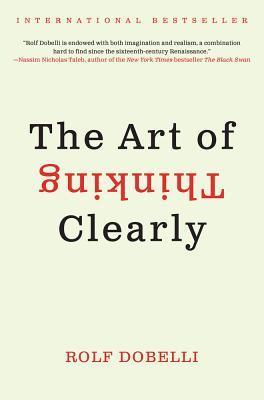TL;DR
Rolf Dobelli's "The Art of Thinking Clearly" explores common cognitive biases that hinder decision-making, offering practical insights to improve clarity in thought and judgment across various aspects of life.
What is The Art of Thinking Clearly about
"The Art of Thinking Clearly" by Rolf Dobelli is a compelling examination of cognitive biases that affect human judgment. The book comprises 99 short chapters, each delving into a specific error in reasoning, such as confirmation bias, social proof, and hindsight bias. Through engaging prose and relatable anecdotes, Dobelli illustrates how these biases can lead to poor decision-making in personal and professional contexts. The author emphasizes that by understanding these cognitive pitfalls, individuals can enhance their decision-making skills, whether it's in business negotiations, investments, or personal challenges. This book serves as an essential guide for anyone looking to improve their thinking processes and make more informed choices.
The Art of Thinking Clearly 8 Key Takeaways
Cognitive Biases
Dobelli categorizes and explains various cognitive biases, such as the confirmation bias and hindsight bias, which lead to flawed reasoning and decision-making.
Overconfidence Effect
The overconfidence effect illustrates how individuals often overestimate their knowledge and predictive abilities, leading to poor decisions.
Story Bias
Story bias involves the tendency to shape events into narratives, influencing our understanding and interpretation of experiences.
Importance of Acknowledging Errors
Recognizing our cognitive errors is crucial for improving decision-making and avoiding pitfalls in judgment.
Impact of External Information
Dobelli highlights how outside information can shape our decisions, emphasizing the need for critical assessment of sources.
Simple Decision-Making Strategies
The book suggests simple strategies to counteract cognitive biases, promoting clearer and more effective decision-making.
Need for Reflection
Engaging in reflection allows individuals to better understand their thought processes and improve future choices.
Practical Real-Life Examples
Dobelli supports his concepts with practical examples and anecdotes, making the material relatable and applicable.
Top The Art of Thinking Clearly Quotes
- "We suffer from confirmation bias: we seek information that confirms our beliefs and ignore information that contradicts them.
- "The inability to see what is not there is one of our biggest blind spots."
- "The essence of clear thinking is the ability to recognize cognitive biases that distort our perception and judgment."
Who should read The Art of Thinking Clearly?
This book is ideal for anyone interested in improving their critical thinking and decision-making skills, including professionals, students, and individuals facing important life choices. By understanding cognitive biases, readers can learn to navigate their thoughts more effectively and make informed decisions that positively impact their lives.
The Art of Thinking Clearly Best Reviews
- "The Art of Thinking Clearly offers a refreshing perspective on decision-making, making complex psychological concepts accessible to everyone." - The Guardian
- "Rolf Dobelli's concise chapters make it easy to digest profound insights that can transform the way we think and act." - Financial Times
- "A must-read for anyone looking to sharpen their reasoning and avoid the common traps of thought that undermine our decisions." - Forbes
People also liked these summaries
The Art of Thinking Clearly FAQs
What is the main focus of The Art of Thinking Clearly?
The main focus of the book is to identify and explain common cognitive biases that affect decision-making, helping readers understand how to avoid these pitfalls.
How is The Art of Thinking Clearly structured?
The book is structured into 99 short chapters, each addressing a specific cognitive error, making the concepts easy to digest and apply.
What can readers gain from this book?
Readers can gain valuable insights into their thought processes, learn to recognize cognitive biases, and improve their decision-making in personal and professional contexts.


